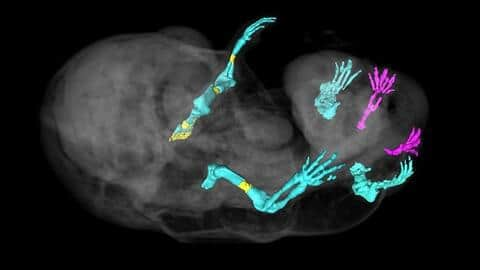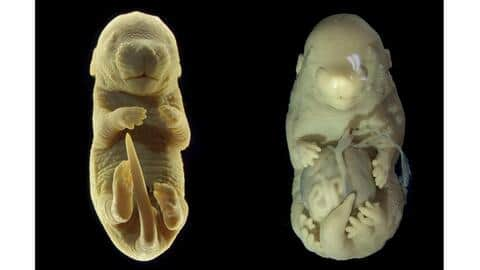Researchers unintentionally made mouse develop legs in place of genitals
In a surprising turn of events, scientists at Portugal's Gulbenkian Science Institute, have inadvertently engineered a mouse embryo to grow an extra pair of legs in place of genitals. This unexpected result was discovered during a study primarily focused on spinal cord research. The project was led by developmental biologists Anastasiia Lozovska and Moises Mallo, who expressed surprise at the outcome, stating "I didn't choose the project, the project chose me."
The role of Tgfbr1 gene in embryo development
The research team was investigating the influence of the Tgfbr1 gene on mouse embryos aged between 10 and 17 days. This gene is responsible for coding the Tgfbr1 receptor protein, which plays a pivotal role in a signaling pathway that directs body formation from trunk to tail. It provides instructions to growing cells of the embryo, such as 'form a hindlimb' here or 'develop external genitals' there.
Deactivation of Tgfbr1 gene leads to extra limbs
The scientists compared embryos with both functioning and non-functioning versions of the Tgfbr1 gene. They found that when this gene was deactivated midway through development, the embryo developed an extra pair of legs instead of genitals. This is because as a mammalian embryo grows, it makes structures sequentially from head to tail, shifting focus early in development from head to extending the body, and laying foundations for major organ systems.
Genes in hindlimbs and genitals share common ground
As the embryo's development progresses, another transition occurs where genes are activated in multiple tissue layers to extend the trunk and form a tail. It's during this procedure that interactions between newly emerging tissues generate structures necessary for exit channels and genitalia. Interestingly, while arms and legs share many genes, at this early stage in development, genitals and hindlimbs have more genetic similarities.
Extra legs express similar genes to normal limbs
Despite the unusual location of the extra legs in embryos lacking functioning Tgfbr1, other genes present in these legs were much like those found in normal mouse limbs. The research team speculated that this could help explain why snakes lack hindlimbs but most lizards have them. This discovery highlights the developmental plasticity revealed by their work and opens up new avenues for further research.


